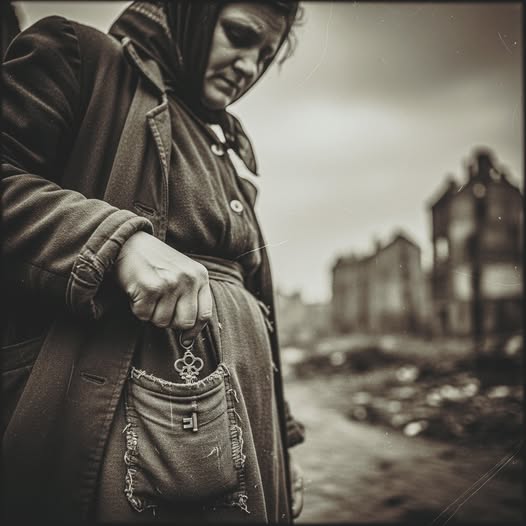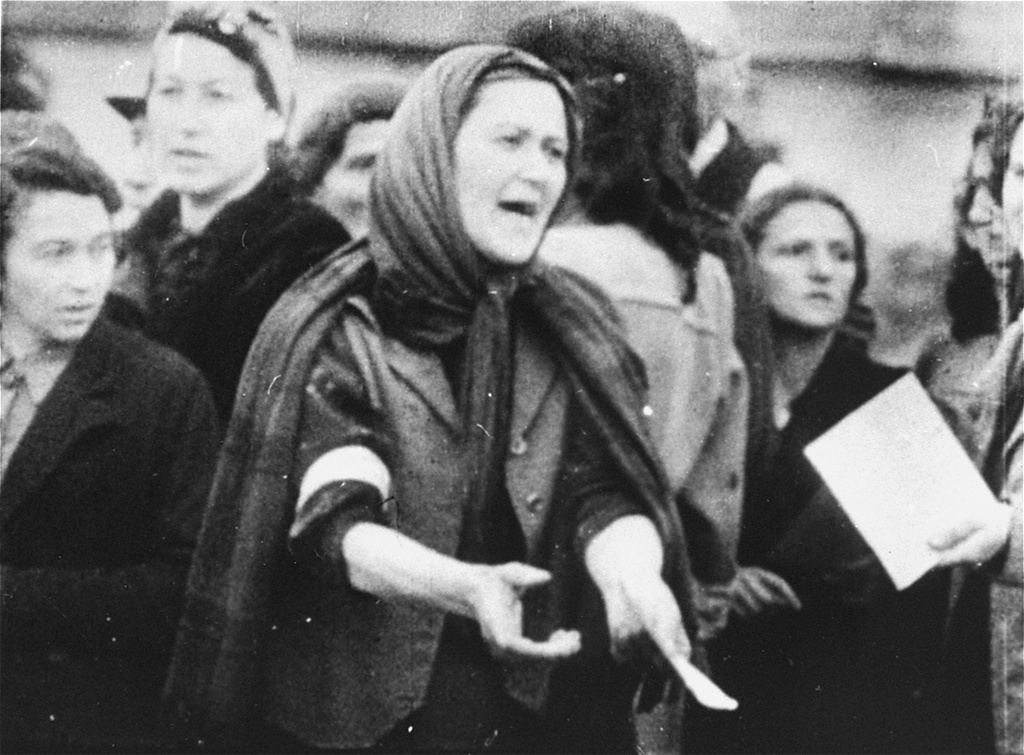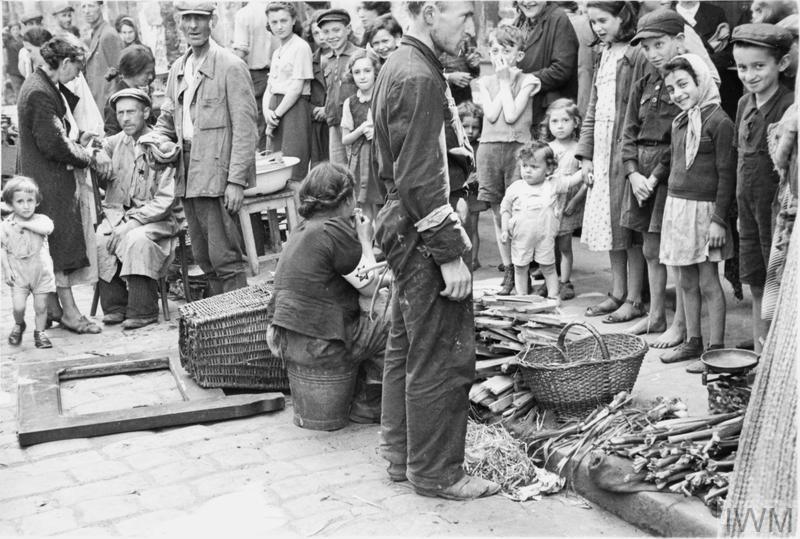The Key in Her Pocket — Warsaw Ghetto, 1943
In the shadows of occupied Warsaw in 1943, as the walls of the ghetto closed tighter around its people, there lived a woman who carried with her a small, rusted key. She kept it tucked carefully into the pocket of her worn skirt, fingers brushing against it each day as though to remind herself of its weight—not only of iron, but of memory, belonging, and hope.
The key was to her home. Not just any building, but the modest apartment where her children had once laughed, where her husband had played his violin by the window, where the scent of warm bread had once drifted through the corridor. That key was more than metal. It was a promise—a talisman of the belief that one day she would unlock her own front door again, step into her kitchen, and breathe in the air of freedom.
The Warsaw Ghetto was not a place to live; it was a place to endure. Streets once bustling with commerce and music became corridors of hunger and despair. Families were crammed into tiny rooms, food was scarce, disease rampant. Every day carried the weight of uncertainty: would today bring deportation, or would tomorrow?
Yet within this despair, people found ways to hold onto fragments of dignity. A mother might mend a child’s coat with scraps of cloth, whispering lullabies into the night. A teacher might conduct secret lessons in a cellar, chalking arithmetic on broken walls. And this woman—who carried the key in her pocket—clung to the ordinary dream of going home.
In a world where everything had been stolen—identity, security, safety—the simple act of holding a house key became a powerful symbol of human resilience.
In April 1943, the Warsaw Ghetto Uprising began. Armed with little more than pistols, homemade bombs, and fierce determination, Jewish fighters resisted the Nazi forces who came to liquidate the ghetto. The woman with the key was among those who witnessed this act of defiance.
She watched as young men and women, starved yet unbroken, rose against impossible odds. Flames consumed buildings, gunfire echoed through the narrow streets. Though the uprising could not stop the destruction, it stood as a statement to the world: we will not go quietly.
During those days, she pressed the key tighter in her pocket, as though it were a shield. She believed still—despite the flames, despite the fear—that she might one day use it again.
When the uprising was crushed, when the streets of Warsaw were reduced to rubble and silence, she was taken away with thousands of others. Cattle cars stood waiting. Families were torn apart. In the chaos, her clothes were stripped from her, left behind with the key still nestled in the pocket.
The trains departed. The key did not go with her.
Later, among the abandoned belongings, someone found it—a small, rusted key with no door to claim. It was picked up, catalogued, preserved. Today, it rests in a museum, a silent witness to the inspirational true story of a woman who carried hope even into the abyss.
That key, corroded by time, speaks volumes. It is not just an object; it is a message across generations.
-
It represents home, the most fundamental human longing.
-
It represents freedom, the belief that doors once locked can be opened again.
-
It represents resilience, the refusal to let despair erase memory or faith.
For her, it was not delusion but survival. To imagine returning home was to give herself something greater than hunger or fear. She believed in tomorrow, even when today seemed unbearable.
In a world still scarred by war, displacement, and loss, the key in her pocket is a reminder to us all. Across continents, millions are forced to flee their homes, carrying with them the keys to places they may never see again. Refugees in Syria, Ukraine, Sudan, and beyond often hold onto keys just like hers—symbols of return, of identity, of a future still possible.
Her story echoes across time, telling us that hope is stronger than fear, that memory can outlast violence, and that even in the darkest chapters, humanity endures.
When we search for survivor stories online—when we look for narratives of strength in the face of unimaginable trials—it is because we crave proof of the human spirit’s durability. We want to believe that resilience is possible, that healing can come even from ruin.
The woman with the key reminds us that survival is not only about escaping death; it is about carrying forward meaning, faith, and dignity. Her key was not to a house, in the end, but to the idea of home itself.
Today, visitors to the museum where her key is displayed often pause in silence. There are no words to capture the enormity of what it represents. They lean closer, reading the placard, staring at the corroded shape, realizing that this was once warm in the palm of someone’s hand—a hand that held onto hope with all its strength.
For educators, the key is a teaching tool. For historians, it is evidence. But for descendants and for the world at large, it is something more: a mirror. It asks us, what would we carry if all else were taken? What symbol would we choose to remind ourselves that life, though fragile, is still worth fighting for?
The woman herself did not survive. Like so many, her life was taken in the machinery of genocide. But her story lives on in that object, in that memory, in that inspirational true story told again and again.
She teaches us that even when freedom is stripped away, the act of holding onto hope is itself an act of defiance. She reminds us that even when homes are destroyed, the concept of “home” can never be fully erased.
Though born of tragedy, her story transcends history. It is about every person who has ever been displaced, every refugee who carries a key around their neck, every exile who dreams of return. It speaks to immigrants who keep photos of villages they may never see again, to soldiers who carry tokens of family across oceans, to survivors of disaster who hold onto a single keepsake amid rubble.
The key in her pocket is a Warsaw story, but it is also a human story.
In the end, the rusted key tells us that hope is stronger than fear. It is a reminder that even in the darkest hour, people reach for symbols that connect them to life, to love, to belonging.
The woman who carried it may never have unlocked her home again, but in carrying it, she unlocked something far greater—the truth that human beings are not defined by what is taken from them, but by what they choose to hold onto.
Today, as we remember the Warsaw Ghetto and the countless lives lost, we hold her story close. The key in her pocket is not just a piece of iron. It is a beacon. A whisper across time. A promise that no matter how deep the night, the possibility of morning endures.
Because freedom is not just a condition of the body—it is a condition of the soul. And even when locked doors remain unopened, the hope of opening them can carry us through.
Note: Some content was generated using AI tools (ChatGPT) and edited by the author for creativity and suitability for historical illustration purposes.





Leave a Reply